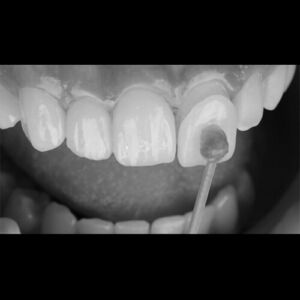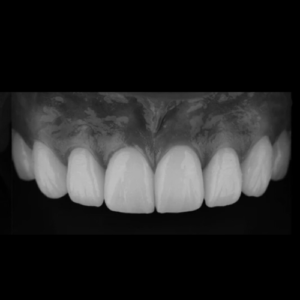Veneers & No-Prep Veneers
No-Prep Veneers
The very ideology of preserving enamel, and bonding to it, is in order to have minimally invasive restorations. Studies have shown that bonding to enamel is much stronger than to dentin, which 

Discolored teeth and teeth that need reduction due to other factors cannot benefit from these, unless adequate and effective bleaching of the teeth is carried out.
The ideology entails the addition of ceramic, irrespective of brand or type, of up to 0.5 mm.
Treatment Preparation
Protocols and Guidelines
- Teeth should be in the right position.
- Teeth should not have severe inter-proximal undercuts.
- The shade should be close to what the patient wants. If you want to lighten them or increase value addition procedures may be indicated, for example; teeth whitening procedures.
- Shape of the teeth matters, having square-shaped teeth are more favorable than triangular.
- In case of gum recession, if you want to perform root coverage, this design may be very difficult to implement due to undercuts in the root area.
- Use of translucent or clear cement gives most predictable results.
Treatment Details
Advantages
- Tooth tissue preservation.
- The best bond you can get, as it is bonded to enamel.
- No post-operative sensitivity.
- Majority of cases, there is no need for temporization.
- No need for anesthetic to cement.
- Greater patient satisfaction: the WOW factor.
Important To Know
Disadvantages
- This is not a method used for extreme corrections of crowding.
- Cannot be used if there are deep interproximal undercuts.
- Limitations in color change, one cannot change the color tremendously.
- 2 mm of ceramic for every shade change.
- Cementation of the veneers are very technique sensitive.
- Expensive laboratory cost, added to the treatment cost.
Veneers (Hollywood smile)
Dental veneers, also known as partial coverage restorations or “Hollywood smile”, are bonded to the frontal surface of the teeth in order to create an ideal natural looking white smile by changing the contour, shape or color of the teeth. Veneers could be made with different materials depending on the indications. It may be direct composite, which is applied directly to teeth and then shaped by a cosmetic dentist or prosthodontist, or with indirect composite or porcelain. These are custom made in a laboratory and then cemented to the teeth. The tooth is shaved slightly so that when the veneer is attached, the tooth does not become thicker or over-contoured. This will permanently change the natural tooth.
Treatment Preparation
Recommended for
- Discolored teeth
- Fractured teeth
- Chipped teeth
- Uneven shapes or contours of teeth
- Misaligned teeth
- Worn tooth enamel
- Tooth decay
Before
To prepare the teeth for veneers, part of the tooth is shaved off. Removing tooth structure is a permanent and irreversible change, therefore patients should consent to getting veneers before choosing to have treatment. The dentist usually removes around 0.5mm of the tooth’s surface so that when the veneer is attached, the tooth does not become thicker or overcontoured, also to remove the discoloration of the teeth.
How
Once the tooth has been prepared (reduced in size), the dentist will make a dental impression. This will be used to create custom veneers in the laboratory. At the next appointment (days later once the veneers have been created by the dental laboratory technician), the dentist will bond the veneers to the teeth. While the Dental Laboratory Technician is fabricating the veneers, the patient will leave with temporary restorations until the fabrication process is complete.
Treatment Details
Materials
Direct composite, indirect composite, porcelain, lumineers, snap on smile.
Anesthesia
Local anesthetic may be used while preparing teeth.
Duration
Direct composite veneers may be done in one session, whereas porcelain veneers need to be created in a laboratory based on an initial mould, requiring at least 2 appointments. The clinic will be able to tell patients how quickly the laboratory can create the veneers. Clinics with their own laboratory on site are usually quicker.
What to expect
Post-operative care
Patients should be careful with eating hard foods, especially in the temporary phase. A night guard is always recommended to protect teeth, especially if patients grind their teeth.
Possible discomfort
Patients may feel some discomfort as a result of the tooth preparation, generally, the procedure is pain-free. If patients experience pain after the veneers are fitted, it can be a sign that the bite needs to be adjusted.
Important To Know
Not recommended for
- Patients with bruxism (teeth grinding) as it may fracture the veneers.
Potential risks
- Problems with the bite.
- Cracks may appear in the veneers.
- Veneer may debond.
Nerve damage (if too much of the tooth has been shaved off)
Meet our Doctors






